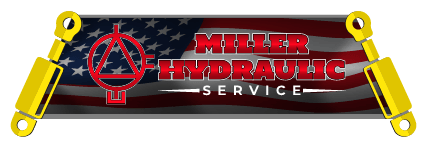Signs That You Need a New Hydraulic Pumping Station

Hydraulic pumping stations play a pivotal role in various industries, powering machinery and facilitating critical processes. Over time, wear and tear can compromise the efficiency of these stations, impacting overall performance. Recognizing the signs that indicate the need for a new hydraulic pumping station is essential for preventing disruptions and maintaining optimal functionality. This post explores the key indicators that signal it's time to invest in a new hydraulic pumping station.
Declining Performance
One of the most evident signs that a hydraulic pumping station requires replacement is a decline in performance. If you notice a decrease in pressure, slower operation, or inconsistent output, it's indicative of internal components reaching the end of their operational lifespan. Addressing this issue promptly is crucial to prevent further deterioration.
Increased Noise Levels
Unusual or increased noise during operation is a clear signal that components within the hydraulic pumping station may be experiencing excessive wear. Prolonged exposure to such conditions can lead to more severe damage, making it imperative to consider a new pumping station to restore optimal noise levels and ensure smooth operation.
Fluid Leaks
The presence of fluid leaks is a visible and concerning sign of hydraulic system malfunction. Leaks can occur due to damaged seals, worn-out hoses, filter issues, or deteriorating connectors. Addressing leaks promptly is essential to prevent contamination of the hydraulic fluid and maintain the integrity of the entire system.
Overheating Issues
Excessive heat is detrimental to hydraulic systems, causing fluid breakdown and accelerating component wear. If you notice consistent overheating issues, it's a clear indication that the hydraulic pumping station may not be effectively dissipating heat. Investing in a new system with improved cooling mechanisms can mitigate this issue.
Unresponsive Controls
Malfunctioning or unresponsive controls are critical indicators that the hydraulic pumping station may be reaching the end of its service life. Whether it's delayed response times, erratic behavior, or outright failure, addressing control issues promptly is essential to avoid operational disruptions and maintain system reliability.
Excessive Vibration
An increase in vibration during operation suggests an imbalance or misalignment within the hydraulic pumping station. Excessive vibration can lead to premature wear of components and compromise the overall system stability. Investing in a new pumping station with enhanced balance and alignment features can mitigate this issue.
Obsolete Technology
Advancements in hydraulic technology occur regularly, and outdated pumping stations may lack the efficiency and features of newer models. If your current system employs outdated technology, upgrading to a new hydraulic pumping station can enhance performance, energy efficiency, and overall productivity.
Frequent Maintenance Requirements
A noticeable increase in the frequency of maintenance and repairs can be a strong indicator that your hydraulic pumping station is approaching the end of its operational life. Investing in a new system can reduce downtime, decrease maintenance costs, and improve long-term reliability.
Inconsistent Output
Fluctuations in the output of a hydraulic pumping station can be a sign of internal wear or component failure. If your system consistently provides inconsistent performance, upgrading to a new pumping station with reliable and stable output is advisable to maintain operational efficiency.
Changing Operational Needs
As your operational requirements evolve, so should your hydraulic pumping station. If your current system no longer meets the demands of your applications, investing in a new station that aligns with your updated operational needs is crucial for sustained productivity.
Being vigilant and responsive to these signs is paramount in ensuring the continued effectiveness of your hydraulic pumping stations. Recognizing these indicators and investing in a new station when necessary will not only prevent operational disruptions but also contribute to the overall efficiency and longevity of your hydraulic system. If your hydraulic pumping station needs to be replaced, contact Miller Hydraulic Service. We carry a large inventory of pumps to meet your specific needs.





